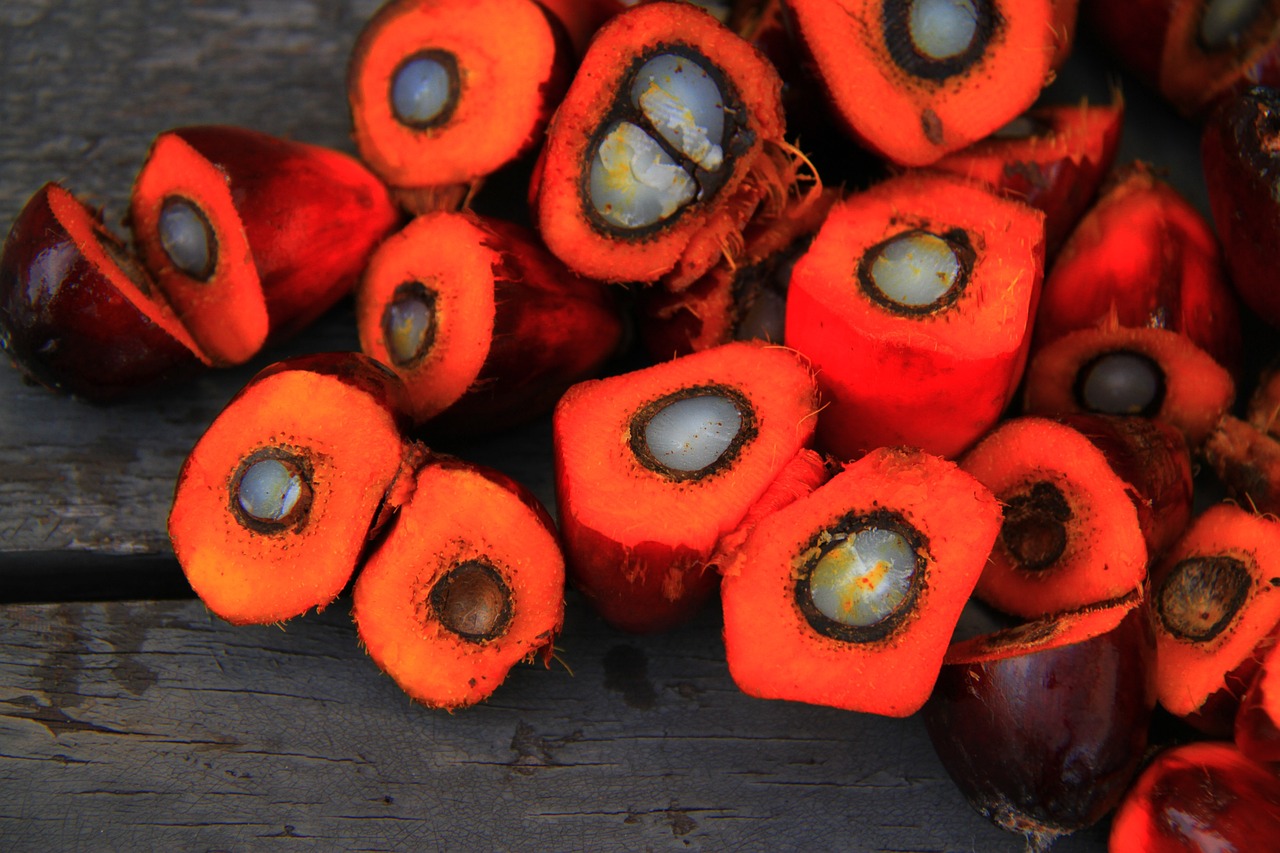Palm oil does not get along with your heart
Palm oil is criticized because, as a saturated fat, is a cause cardiovascular disease and has damaging effects on the heart and on hypertension. Palm oil is derived from the homonymous plant (Elaeis guineesis), originally from Africa and nowadays cultivated in tropical areas of the American continent and in Malaysia and Indonesia. Two different types of oil can be extracted from this plant’s fruits: palm oil from the pulp, and palm kernel oil from the seeds.
Unrefined palm oil is orange in color, due to the high levels of carotenoids, precursors of vitamin A. Therefore, before reaching our kitchens, palm oil undergoes a series of refinement processes, including deodorization, discoloration and neutralization (used to eliminate free fatty acids, reducing the acidity of the oil). Unfortunately, the high temperatures involved in these processes also cause the decomposition of carotenoids.
The food industry is accused of making vast use of this product despite its high content of saturated fats, which is superior to that of most other oils.
Is palm oil bad for your health?
It is important to notice that saturated fats are considered partly responsible for cardiovascular disease, although we should remember that they are not all the same.
We must distinguish between short chain saturated fats (cardio-protective), medium chain saturated fats (neutral) and long chain saturated fats (damaging). The latter are the ones that increase the risk of developing hypertension, arteriosclerosis and high cholesterol. Palm oil, contains high levels of saturated long chain palmitic acid, but this quantity of damaging fats is accompanied by 51.5% unsaturated cardio-protective fats: about 39% monounsaturated fats (oleic acid, typical of olive oil) and 12% polyunsaturated fats, especially linoleic acid. Bear in mind that butter contains only 21.6% palmitic acid and also contains lauric and myristic acid, which are saturated medium chain fats and therefore neutral towards cardiovascular risk, plus butyric acid, which is a short chain saturated fat and therefore with protective qualities. However, butter only has half (26.5%) of the protective monounsaturated fatty acids in palm oil.
The Belgian Health Council recommends that you limit the consumption and use of palm oil due to its high content in saturated fatty acids, especially as studies on palm oil are controversial, give conflicting results and are often hard to compare since they occasionally fail to specify the form in which it was analyzed. In fact, palm oil seems to have the best nutritional properties when in crude form, as it is rich in beta-carotene, alpha-carotene and vitamin E alpha-tocopherol. The refined product, most commonly used in the food industry, offers few of the crude product’s properties. Palm oil is particularly rich in palmitic acid, a substance that many studies, and reports from the World Health Organization, associate with an atherogenic effect and a rise in cholesterol levels, which has a negative impact on cardiovascular risk.
Scientific articles below:
- Palm oil and the heart: A review (World J Cardiol. 2015 March 26; 7(3): 144-149)
http://www.ncbi.nlm.nih.gov/pmc/articles/PMC4365303/ - Palm oil and blood lipid-related markers of cardiovascular disease: a systematic review and meta-analysis of dietary intervention trials. (Am J Clin Nutr. 2014 Jun;99(6):1331-50)
http://ajcn.nutrition.org/content/99/6/1331.long - Palm oil taxes and cardiovascular disease mortality in India: economic-epidemiologic model. (BMJ. 2013 Oct 22;347:f6048) http://www.bmj.com/content/347/bmj.f6048.long
- Heated vegetable oils and cardiovascular disease risk factors (Vascular Pharmacology Volume 61, Issue 1, April 2014, Pages 1–9) http://www.sciencedirect.com/science/article/pii/S1537189114000536


